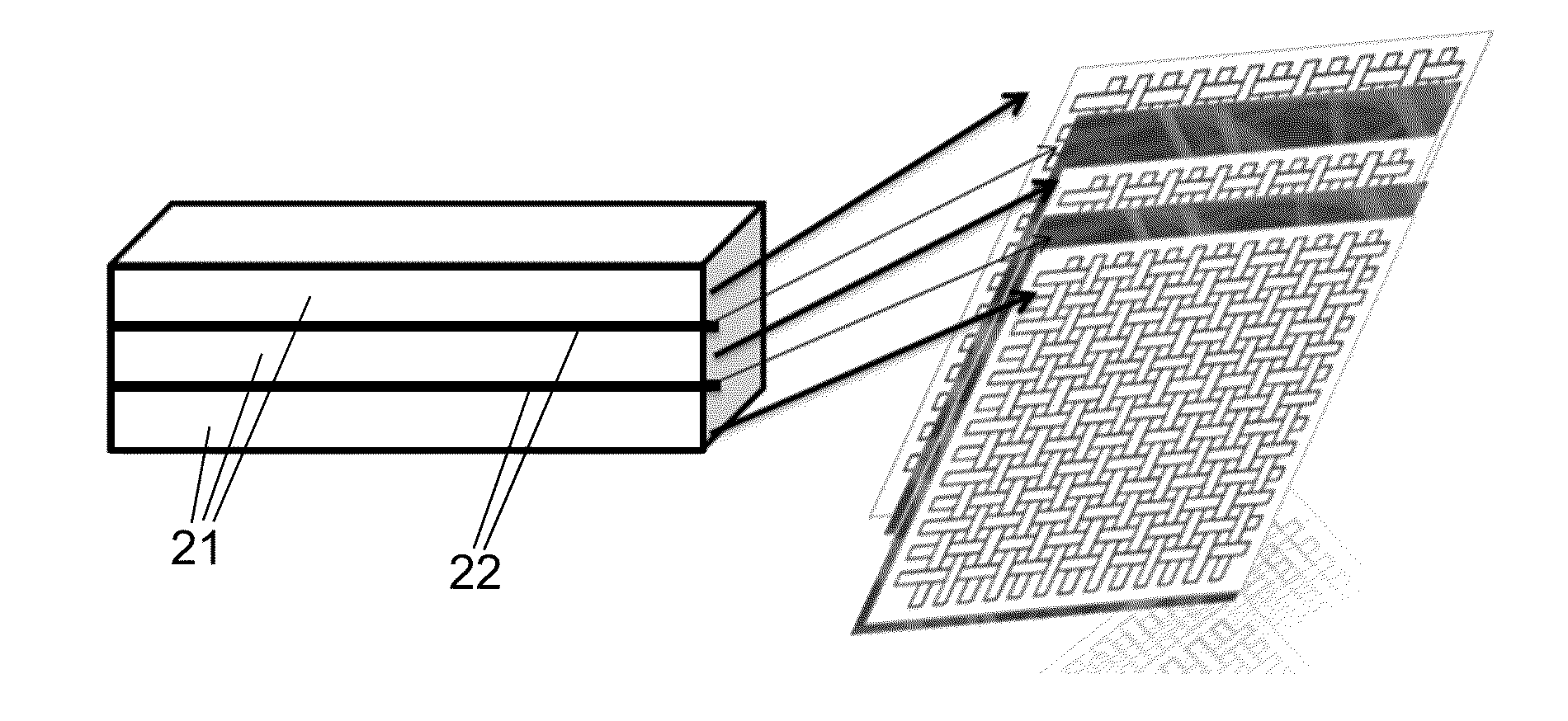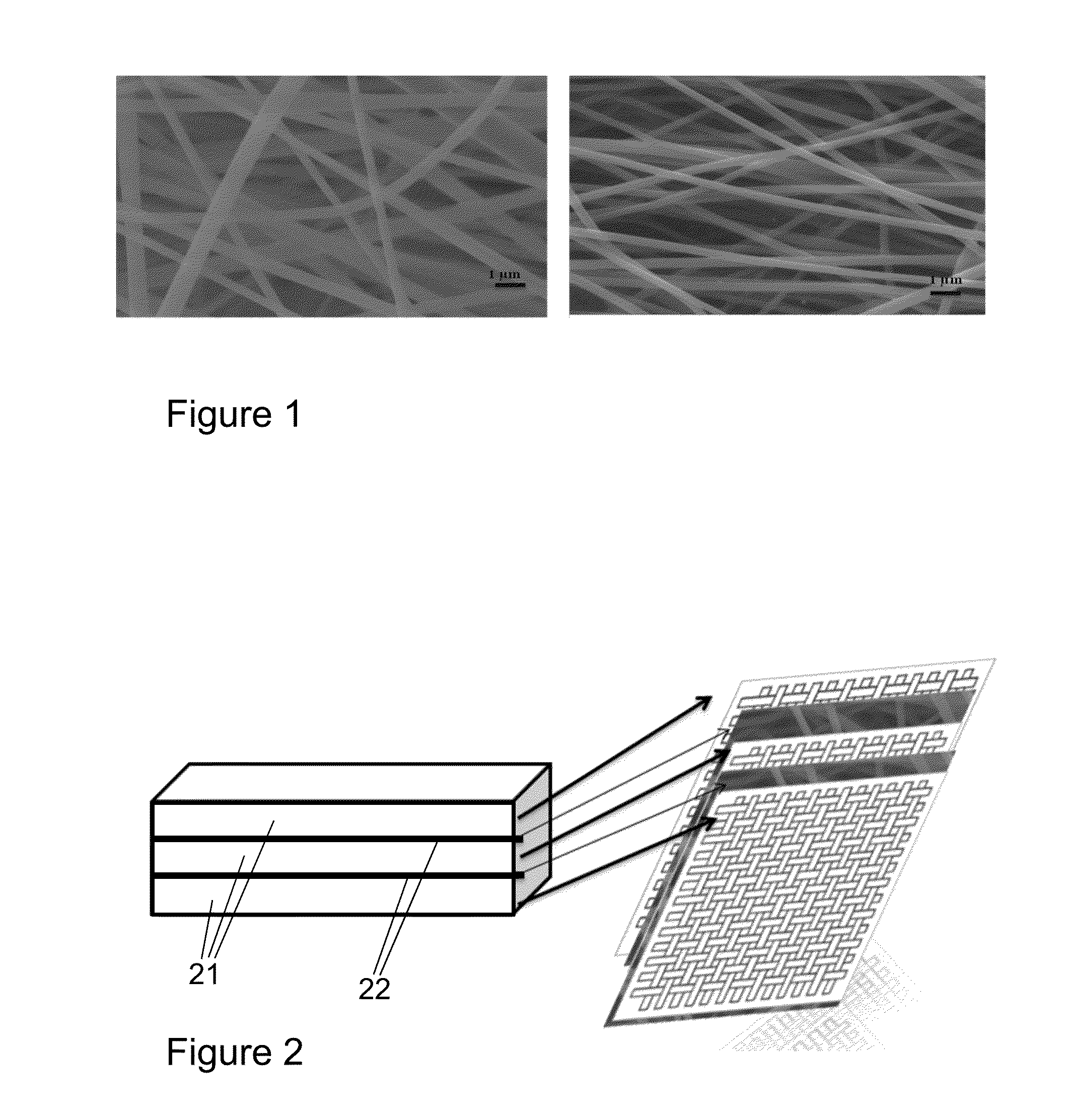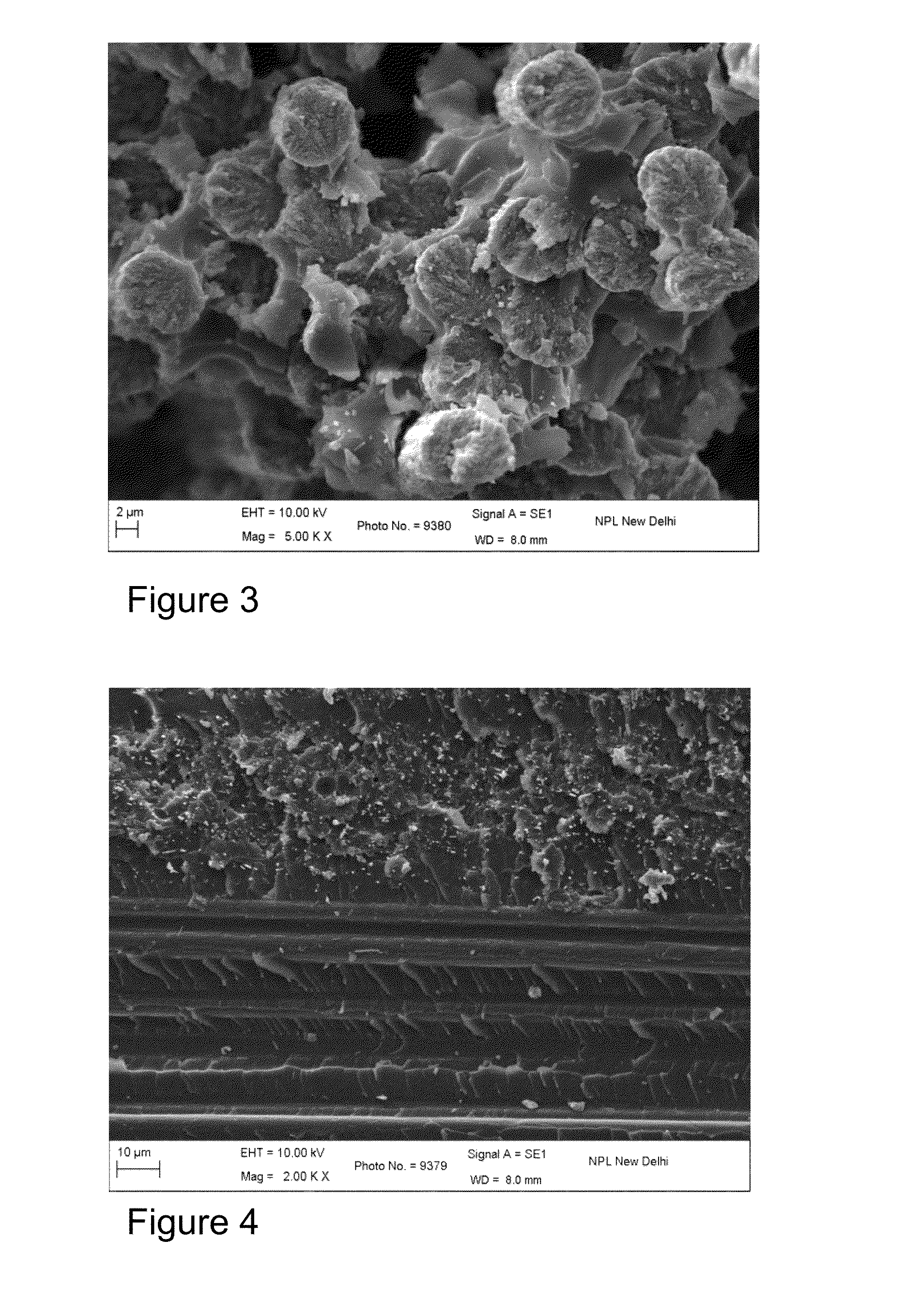High performance light weight carbon fiber fabric-electrospun carbon nanofibers hybrid polymer composites
a carbon nanofiber and composite material technology, applied in the direction of synthetic resin layered products, filament/thread forming, chemistry apparatus and processes, etc., can solve the problems of poor interfacial bonding strength and load transfer, catastrophic failure of the whole structure, and extremely susceptible to crack initiation and propagation of composite structures in the form of laminates, etc., to improve interlaminar shear strength and improve bending strength
- Summary
- Abstract
- Description
- Claims
- Application Information
AI Technical Summary
Benefits of technology
Problems solved by technology
Method used
Image
Examples
example 1
[0047]The polymer having high carbon yield has been taken as source polymer for the synthesis of continuous electrospun polymer nanofiber sheet. The polyacrylonitrile 12 wt % solution was prepared by dissolving in organic solvent (N, N Dimethylformamide) to get spinable solution of weight content 12 wt %. The solution was stirred on magnetic stirrer for 18 h to get uniformly mixture. The prepared solution was electrospun at 0.50 ml / hr at applied voltage 15 KV. Tip to collector distance was kept 20 cm and collector speed 2000 rpm. The collected fibers were continuous on collector.
example 2
[0048]As per Example 1, solution prepared from 12 wt % of polyacrylonitrile (PAN) in N,N Dimethylformamide was electrospun at flow rate of 0.20 ml / hr, tip to collector distance 20 cm and drum collector speed 2000 rpm. Voltage was kept at 15 KV. The continuous polymer nanofibers collected on the collector of diameter from 500-600 nm.
example 3
[0049]As per example 2, PAN based nanofiber sheets are stabilized at 300° C. in oxidizing atmosphere (in Air) at heating rate 2° C. / min to get thermally stable nanofiber sheets. The stabilized nanofiber sheet carbonized at 1000° C. and to get carbon nanofibers having diameter less than stabilized nanofibers (200-300 nm).
PUM
| Property | Measurement | Unit |
|---|---|---|
| thickness | aaaaa | aaaaa |
| bending strength | aaaaa | aaaaa |
| interlaminar shear strength | aaaaa | aaaaa |
Abstract
Description
Claims
Application Information
 Login to View More
Login to View More - R&D
- Intellectual Property
- Life Sciences
- Materials
- Tech Scout
- Unparalleled Data Quality
- Higher Quality Content
- 60% Fewer Hallucinations
Browse by: Latest US Patents, China's latest patents, Technical Efficacy Thesaurus, Application Domain, Technology Topic, Popular Technical Reports.
© 2025 PatSnap. All rights reserved.Legal|Privacy policy|Modern Slavery Act Transparency Statement|Sitemap|About US| Contact US: help@patsnap.com



